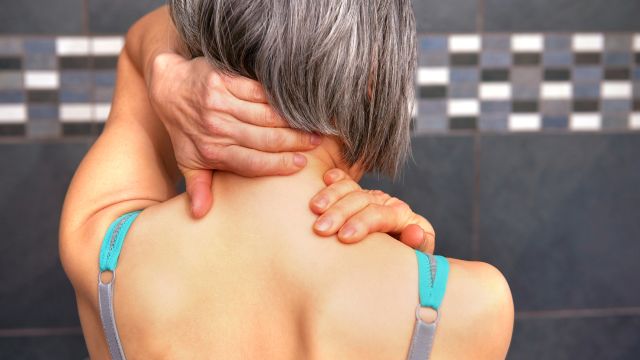Updated on April 3, 2024
Depression is a mental health condition most often associated with symptoms that affect a person’s moods, thoughts, and behaviors—symptoms like persistent sadness, hopelessness, loss of interest and pleasure in previously enjoyable activities, and many others. Another symptom associated with depression is pain.
What is pain?
Pain is defined as an unpleasant sensation that is physical and emotional. It functions as a warning signal for the body, alerting a person to things like injury, illness, and the risk of further damage. Pain from a strained muscle signals a person to stop the activity that caused the strain. Pain from walking barefoot on hot sand signals a person to seek shade or shoes to prevent burning their feet. Pain from an infection alerts a person to seek treatment.
People living with depression may experience unexplained pain such as headaches, muscle aches, abdominal pain, joint pain, lower back pain, and neck pain. In some people, these may be the first symptoms of depression to appear. In some cases, these may be the only symptoms.
There is also chronic pain, which is defined as pain that lasts for three months or longer. Chronic pain can happen without any identifiable cause, or it can continue long after the initial cause of pain (such as an injury or illness) has healed or resolved. Chronic pain has a significant association with depression.
In addition to depression, other risk factors for chronic pain include being overweight, sedentary lifestyle, smoking, alcohol use, and a history of childhood adversity.
How is depression linked to pain?
Though it is well established that many people who have depression live with recurring or chronic pain, the association between depression and physical pain is complex and not fully understood:
- The relationship is considered bidirectional—with depression contributing to pain and pain contributing to depression.
- More severe pain is associated with more severe depression—but it is less clear if more severe depression leads to more severe pain.
- Depression and chronic pain may share some underlying mechanisms in how they affect the brain and nervous system. One example is neuroinflammation, inflammation that occurs in the brain and spinal cord. This is an area of ongoing research, and it is not yet fully understood.
- Some research suggests that changes in the brain that occur because of depression may cause a person to experience pain more intensely than a person without depression.
- Pain is also associated with other mental health conditions, including anxiety disorders. These conditions coexist alongside one another for many people.
How can chronic pain contribute to depression?
It is well established that having a condition that causes chronic pain also increases a person’s risk of having depression. This includes first episodes of depression and relapses of depression for people who have had depression in the past.
In addition to the points discussed above, chronic pain can contribute to depression in a much more straightforward manner. Living with chronic pain is physically and emotionally draining, it lowers a person’s quality of life, and it limits what they can do with their time and energy. It impacts relationships, work, personal finances, and many other important aspects of a person’s life. It increases stress and reduces the quality of sleep.
Treating chronic pain and depression
If you are experiencing symptoms of pain, depression, or both, it’s important to speak with a healthcare provider. Treating chronic pain often improves how a person responds to treatment for depression. The approach to treating chronic pain will depend on the factors contributing to pain, including any underlying conditions.
Antidepressants and chronic pain
Some types of antidepressants are used to treat chronic pain associated with certain health conditions. Examples include arthritis, fibromyalgia, pain associated with nerve damage, migraines, and multiple sclerosis. Though it is not fully understood how antidepressants treat pain, research suggests that antidepressants help regulate the chemicals that are involved in the perception and transmission of pain. It’s important to talk to a healthcare provider about the potential benefits and potential risks of any antidepressant medication.
Nonpharmacologic therapies
“Nonpharmacologic” refers to therapies that do not involve medications. There are many nonpharmacologic therapies used in the treatment of chronic pain. Some are also used to manage depression. These include cognitive behavioral therapy, group therapy, relaxation therapy, and biofeedback. As with any treatment option, a healthcare provider is your best source of information.
Mental health emergencies
It's also important to acknowledge that chronic pain and depression are associated with an increased risk of suicide and self-harm. If you or a loved one is having thoughts of suicide or self-harm, seek help immediately. Licensed mental health professionals are available at the 988 Suicide and Crisis Lifeline, which can be contacted by calling or texting 988.






